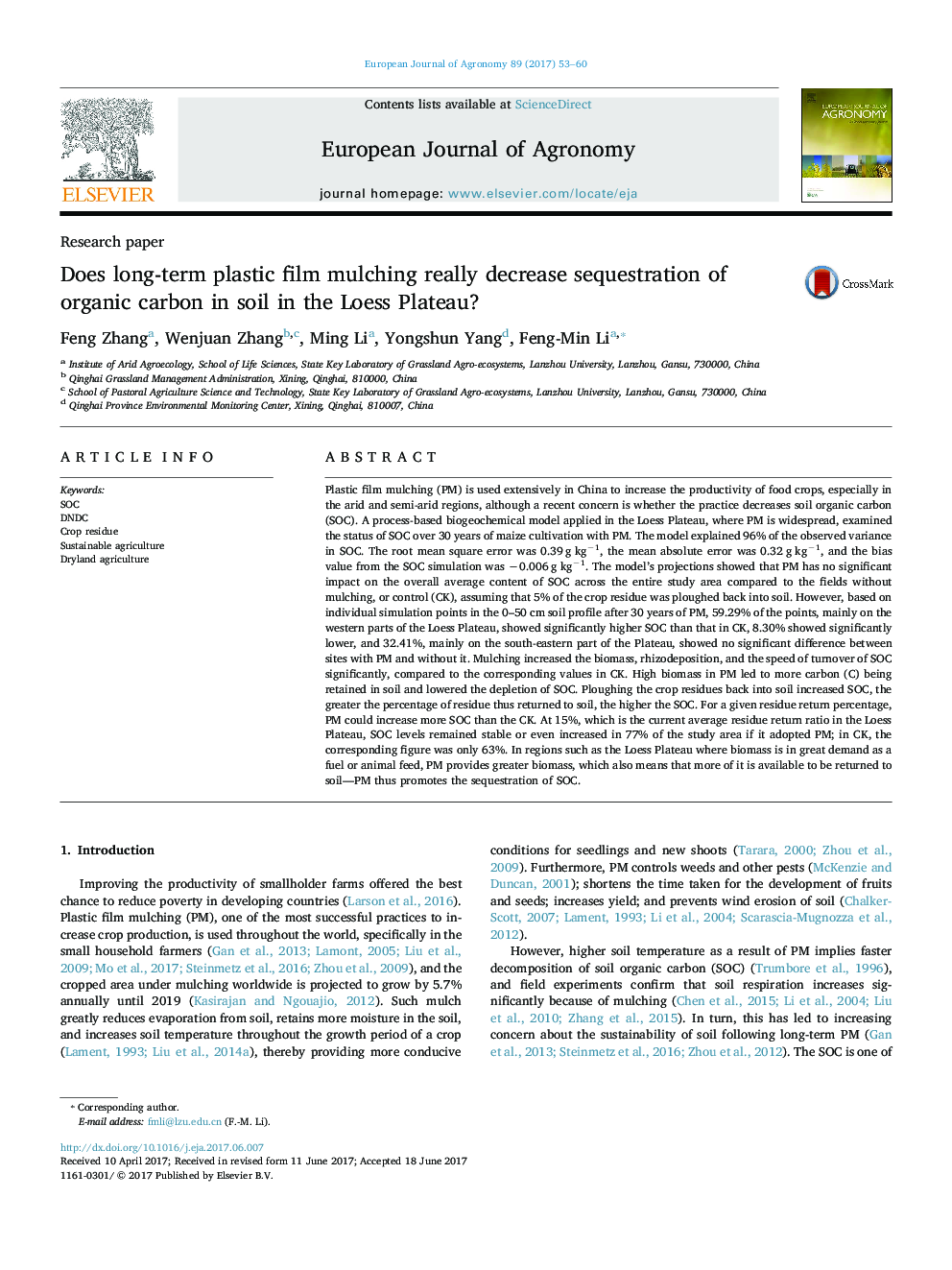| کد مقاله | کد نشریه | سال انتشار | مقاله انگلیسی | نسخه تمام متن |
|---|---|---|---|---|
| 5761220 | 1624435 | 2017 | 8 صفحه PDF | دانلود رایگان |
عنوان انگلیسی مقاله ISI
Does long-term plastic film mulching really decrease sequestration of organic carbon in soil in the Loess Plateau?
ترجمه فارسی عنوان
آیا مالچ دراز مدت فیلم پلاستیکی باعث کاهش جذب کربن آلاینده در خاک در ورقه لس می شود؟
دانلود مقاله + سفارش ترجمه
دانلود مقاله ISI انگلیسی
رایگان برای ایرانیان
کلمات کلیدی
موضوعات مرتبط
علوم زیستی و بیوفناوری
علوم کشاورزی و بیولوژیک
علوم زراعت و اصلاح نباتات
چکیده انگلیسی
Plastic film mulching (PM) is used extensively in China to increase the productivity of food crops, especially in the arid and semi-arid regions, although a recent concern is whether the practice decreases soil organic carbon (SOC). A process-based biogeochemical model applied in the Loess Plateau, where PM is widespread, examined the status of SOC over 30 years of maize cultivation with PM. The model explained 96% of the observed variance in SOC. The root mean square error was 0.39 g kgâ1, the mean absolute error was 0.32 g kgâ1, and the bias value from the SOC simulation was â0.006 g kgâ1. The model's projections showed that PM has no significant impact on the overall average content of SOC across the entire study area compared to the fields without mulching, or control (CK), assuming that 5% of the crop residue was ploughed back into soil. However, based on individual simulation points in the 0-50 cm soil profile after 30 years of PM, 59.29% of the points, mainly on the western parts of the Loess Plateau, showed significantly higher SOC than that in CK, 8.30% showed significantly lower, and 32.41%, mainly on the south-eastern part of the Plateau, showed no significant difference between sites with PM and without it. Mulching increased the biomass, rhizodeposition, and the speed of turnover of SOC significantly, compared to the corresponding values in CK. High biomass in PM led to more carbon (C) being retained in soil and lowered the depletion of SOC. Ploughing the crop residues back into soil increased SOC, the greater the percentage of residue thus returned to soil, the higher the SOC. For a given residue return percentage, PM could increase more SOC than the CK. At 15%, which is the current average residue return ratio in the Loess Plateau, SOC levels remained stable or even increased in 77% of the study area if it adopted PM; in CK, the corresponding figure was only 63%. In regions such as the Loess Plateau where biomass is in great demand as a fuel or animal feed, PM provides greater biomass, which also means that more of it is available to be returned to soil-PM thus promotes the sequestration of SOC.
ناشر
Database: Elsevier - ScienceDirect (ساینس دایرکت)
Journal: European Journal of Agronomy - Volume 89, September 2017, Pages 53-60
Journal: European Journal of Agronomy - Volume 89, September 2017, Pages 53-60
نویسندگان
Feng Zhang, Wenjuan Zhang, Ming Li, Yongshun Yang, Feng-Min Li,
